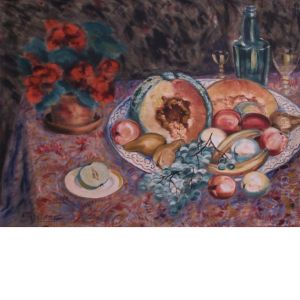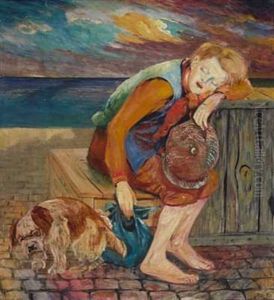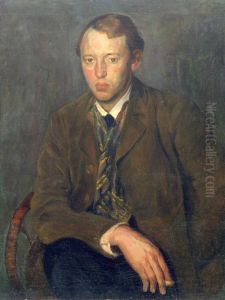Aksel Waldemar Johannessen Paintings
Aksel Waldemar Johannessen was a Norwegian expressionist painter born on October 10, 1880, in Kristiania, now known as Oslo, Norway. His work is characterized by a raw, emotional style that often depicted the hardships and struggles of the working class, as well as personal turmoil. Johannessen’s life was marked by hardship and his art received little recognition during his lifetime.
Johannessen's artistic journey began at the Royal School of Art and Design of Kristiania, where he studied from 1898 to 1901. Despite showing promise, his career did not take off as he had hoped. He struggled financially and personally, which deeply influenced his artwork. Johannessen's paintings often portrayed the darker sides of human existence, including poverty, illness, and despair, themes that reflected his own life experiences.
His personal life was fraught with difficulties. Johannessen battled alcoholism and faced numerous personal losses, including the death of his children. These tragic experiences infused his art with a poignant, emotional depth that was largely unappreciated at the time. His work was largely ignored by the art establishment in Norway, and he sold very few paintings during his lifetime.
Tragically, Aksel Waldemar Johannessen's life was cut short at the age of 42. He died on November 10, 1922, in Oslo. It was not until many years after his death that his work began to be reevaluated and gained the recognition it deserved. In the late 20th and early 21st centuries, art historians and collectors started to appreciate the intensity and emotional power of his expressionist works, and Johannessen was posthumously acknowledged as a significant figure in Norwegian art history.
Today, Johannessen's work is considered an important part of the expressionist movement in Norway. His paintings are held in various private collections and museums, and he is recognized for his contributions to the development of expressionist art in Scandinavia. Johannessen's legacy continues to inspire artists and art lovers alike, and his story serves as a poignant reminder of the often challenging path faced by artists and the posthumous recognition that some achieve.



